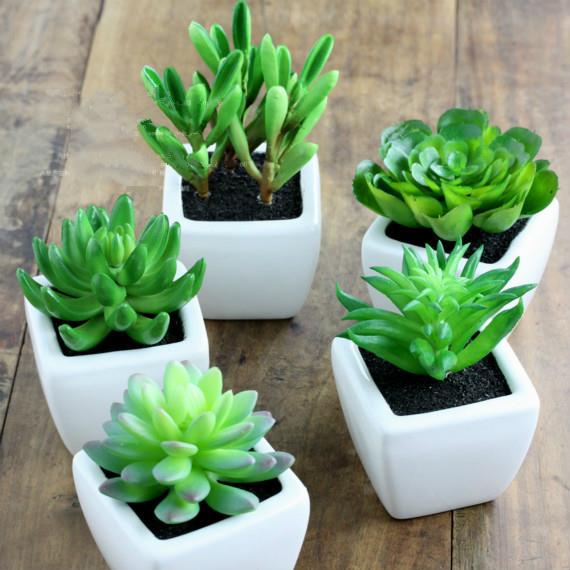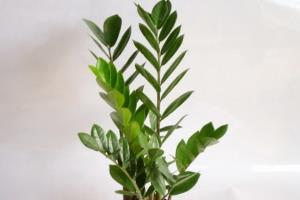Breeding tips give life to potted plants
Potted plants create an outdoor natural scenery for us in the narrow personal space, let us place ourselves in the edification of nature in the tense life and work, and make the home more alive. But how should potted plants be raised? Next, the editor will introduce it to you.

1. Typical potted plant species
Ivy: the champion of absorbing formaldehyde
Ivy is currently the most effective indoor plant to absorb formaldehyde, with 1.48 mg of formaldehyde per square meter of ivy leaves, while the total leaf area of 2 pots of adult ivy is about 0.78 square meters. At the same time, ivy can also absorb benzene, a toxic and harmful substance, and can absorb 90% of indoor benzene under 24-hour light conditions. According to speculation, 10 square meters of room, only need to put 2-3 pots of ivy can play a role in purifying the air, it can also absorb particles of dust.
Asparagus: killing bacteria
And virus protection umbrella asparagus contains plant aroma with antibacterial ingredients, can remove bacteria and viruses in the air, with health care function, so the smell released by asparagus has bactericidal and bacteriostatic effect. In addition, asparagus has high medicinal value. Dig up its fleshy roots and wash off the dirt and dirt, dry it or use it fresh. The leafy branches are picked as they are used, and all have the effect of relieving cough, moistening the lungs, cooling blood and detoxifying.
Introduction of cultivation methods of potted plants
1. Check for pests
Check whether there are pests and eggs under the stems and leaves of the plant. These primary plants should be placed separately from other potted plants for a month to prevent possible cross-infection. Once pests are found, insecticides should be used immediately.
2. Maintain humidity
Overheated, dry air is not good for potted plants, and it is easy to make spider mites more active. To maintain the humidity of potted plants, you might as well take these measures: 1, use humidifiers; 2, put plants in the same place; 3, put plants on trays containing water and pebbles (water should not drown pebbles).
3. Change the basin only when it is time to change the basin
There is no need to change pots unless the roots of potted plants stretch all over the pot. It is best to choose the early spring season to change the basin. At the same time, attention should be paid to watering the basin once before changing the basin according to the situation, and then change the basin when the soil is moderately dry and wet.
4. Give the plants a bath
"bathing" plants (that is, washing plants with hoses or showers) can get rid of many pests. Bathing plants in late autumn can also remove dust from leaves. Pay attention to the washing process should not be too fierce, so as not to damage the branches and leaves. At the same time, care should be taken not to bruise the plants during flushing.
5. Arrange the plants and don't prune them.
At present, pruning potted plants is not conducive to their dormancy. Dead branches and leaves can be removed, but it is best not to prune before late winter.
There is still a certain emphasis on the care of potted plants, such as checking insect pests, maintaining humidity, and interfering with the normal growth of plants as little as possible, such as changing pots when they should be changed. But pay attention to cleaning plants in autumn and wash them with water to remove dust from the leaves. If you want to know more about plant farming skills, please continue to follow the No.1 Home Network.
- Prev

The latest star of the sky price of the morphological characteristics of the star
The latest star of the sky price of the morphological characteristics of the star
- Next

What's wrong with the rotten roots of the money tree? even the rotten root of the money tree can save life.
What's wrong with the rotten roots of the money tree? even the rotten root of the money tree can save life.
Related
- Wuhan Hospital Iron Tree Blooming Result Was Instantly Frightened by the Gardener Master
- Which variety of camellia is the most fragrant and best? Which one do you like best?
- What is the small blue coat, the breeding methods and matters needing attention of the succulent plant
- Dormancy time and maintenance management of succulent plants during dormancy
- Minas succulent how to raise, Minas succulent plant pictures
- What are the varieties of winter succulent plants
- How to raise succulent plants in twelve rolls? let's take a look at some experience of breeding twelve rolls.
- Attention should be paid to water control for succulent plants during dormant period (winter and summer)
- Watering experience of twelve rolls of succulent plants
- Techniques for fertilizing succulent plants. An article will let you know how to fertilize succulent plants.

